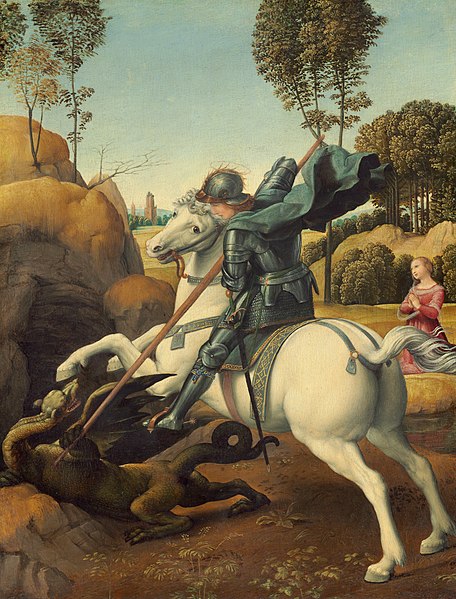A Polish Nobleman is a 1637 painting by Rembrandt depicting a man in a costume of Polish szlachta (nobility). The identity of the subject of the painting is unclear, and has given rise to several different interpretations. The view that the figure's dress is clearly Polish is not universally held and it may have been a self-portrait.
A Polish Nobleman
Soviet sale of Hermitage paintings
The Soviet sale of Hermitage paintings in 1930 and 1931 resulted in the departure of some of the most valuable paintings from the collection of the State Hermitage Museum in Leningrad to Western museums. Several of the paintings had been in the Hermitage Collection since its creation by Empress Catherine the Great. About 250 paintings were sold, including masterpieces by Jan van Eyck, Titian, Rembrandt, Rubens, Raphael, and other important artists. Andrew Mellon donated the twenty-one paintings he purchased from the Hermitage to the United States government in 1937, which became the nucleus of the National Gallery of Art in Washington, D.C.
The Alba Madonna by Raphael, was bought for the Hermitage by Emperor Nicholas I of Russia in 1836. It was sold to Andrew Mellon by the Soviet Government in 1931 for $1,166,400, the largest sum ever paid for a painting until that time.
The Annunciation by Jan van Eyck (1434) was purchased for the Hermitage by Emperor Nicholas I of Russia in 1850. It was sold to Andrew Mellon in June 1930 for $502,899.
Mezzettino by Antoine Watteau, was purchased for the Hermitage by Catherine the Great in 1767. It was sold in May 1930 to Calouste Gulbenkian, who sold it in 1934 to the Metropolitan Museum in New York.
Saint George and the Dragon, by Raphael, was purchased for the Hermitage by Catherine the Great in 1772, and later hung in the gallery of portraits of the generals who had defeated Napoleon. It was sold to Andrew Mellon in 1931.





